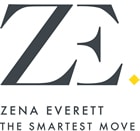It’s peak networking time.
Some people are natural networkers, but as recent research has found that up to 45% of us claim to feel shy some of the time, the chances are that many of us avoid networking if we can get away with it. Business networking is a career-enhancing soft skill. Here’s some tactics to do it well and authentically; feel free to forward them around your own network.
First, only go to business talks and events if you are genuinely interested in the subject matter. Networks are held together by trust. You’ve blown it from the get-go if you are there just to make new contacts and develop business; people can smell self-interest a mile off. We do business with people we like and who we feel resemble us in some way. Start from a position of common values and interest in the subject matter and build a relationship from there.
Don’t feel you need to work the room. It is better to leave with one business card of someone you want to keep in touch with than with a fistful of cards from people you didn’t really connect with.
If possible, get to the event on time so you can chat to people as they arrive, including making yourself known to the organisers. It can be daunting to get there late when everyone is already in a conversation. Switch your phone off and put it away if possible; don’t waste networking time by checking your emails at the breaks to avoid social interaction.
Break into ‘open’ groups of three or more. Don’t get stuck talking to one person on their own or interrupt two people talking. Larger groups tend to be more accommodating to new members. Just say ‘may I join you’, then listen to the conversation until you can join it naturally.
If you go with colleagues separate when you get there. Tempting though it is to stick together, it’s not really the point and a pack of you can be intimidating. Chat to other people first, then regroup at the end of the event and head off somewhere else to let your hair down if you want to.
If you are an expert in your field but not representing an organisation, conference organisers might let you go to expensive events for free, particularly if you will help out, such as participating in panel discussions. It’s a great way to stay current and visible.
Ideally get a guest list before the event so you can target people to talk to. Don’t make it obvious that you are there to talk to them, just get into conversation naturally. Oh, Jane Smith, how lovely to meet you in person. My name is Zena and I was just reading about your Women in Business group – such a great initiative in your industry. How’s it going?
Listen. You don’t learn by talking. Definitely don’t start selling. Draw people into conversation. Ask questions: ‘what do you think should be done about such-and-such?’ ‘what do you think about X?’. I love to people-watch at these events to see who is really listening, i.e. looking at the other person’s eyes and paying full attention. They often seem anxious, keeping an eye on the door for new guests, or else appear desperate to give their point of view (Oh really? I’ll think you’ll find actually...)
Networking is all about what you can do for others, so prepare a few lines to explain your value in an engaging way. People think in pictures, not words. I did some personal branding work with Forensic Accountants recently who found metaphors to differentiate themselves and be memorable: I’m like a bloodhound finding clues, I un-cook the books, I find needles in haystacks and so on. Make a positive, energetic impact that sticks in the mind. Don’t moan about how hard the venue was to find or be negative in any way.
Obviously don’t overdo the alcohol (I am writing this from the wisdom that comes with age). It’s easy to drink more than you intend to, particularly if you haven’t eaten beforehand, the canapés are frugal and your glass gets topped up frequently.
Send LinkedIn invitations after the event so you can stay in contact, including a personalised message that refers to your conversation. ‘It was lovely to meet you last night and to get your thoughts on Y. It would be good to connect on here and stay in touch.’ Organise a follow-up meeting if you can. Make sure your LinkedIn profile is up to date, perhaps with some recent projects or links to illustrate what you can do for them.
Do some favours to play it forward. Connect people, send them useful links, pass on leads. Remember WIFM – What’s In It For Them to be connected to you?

